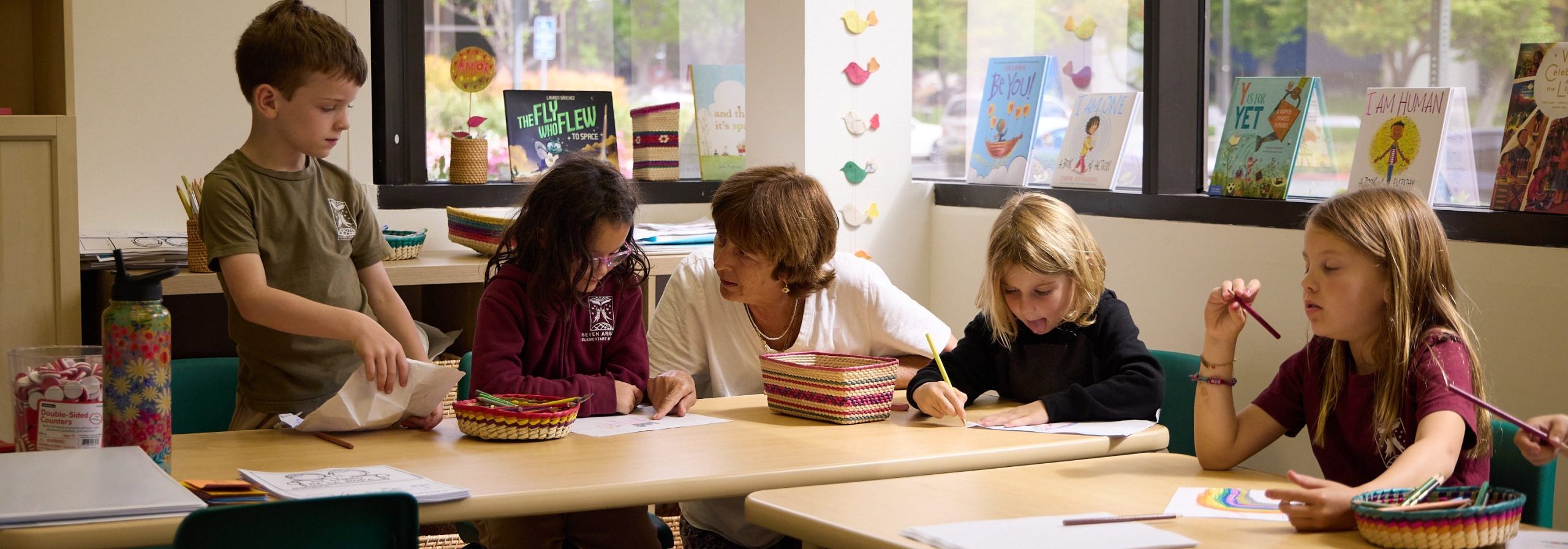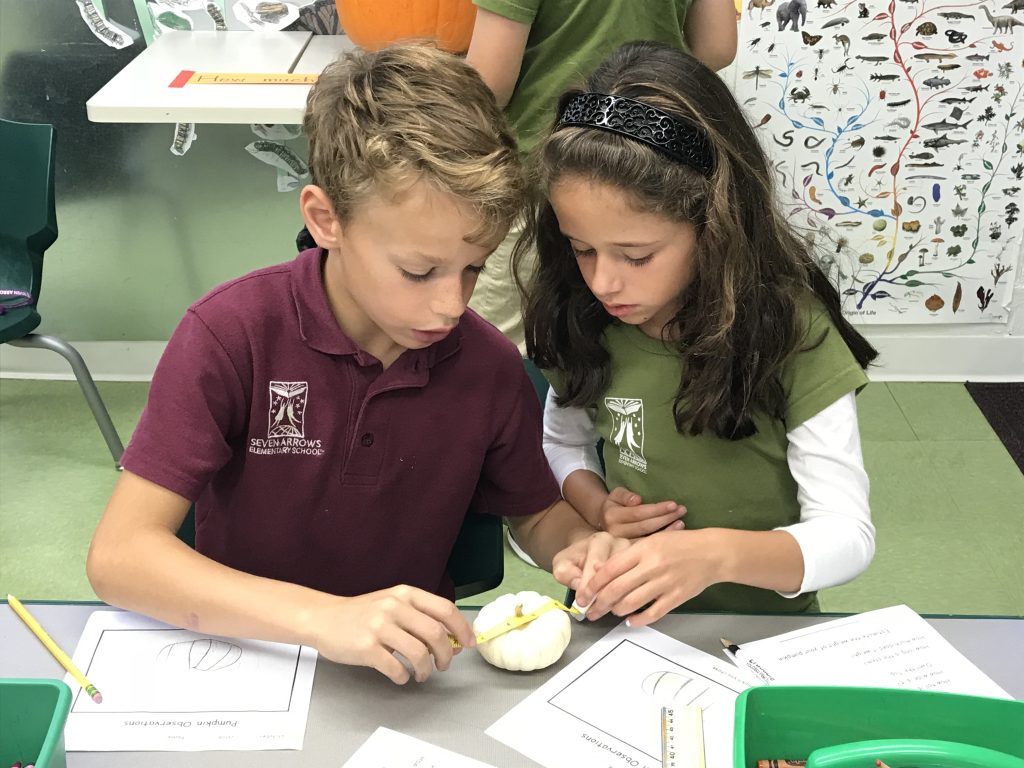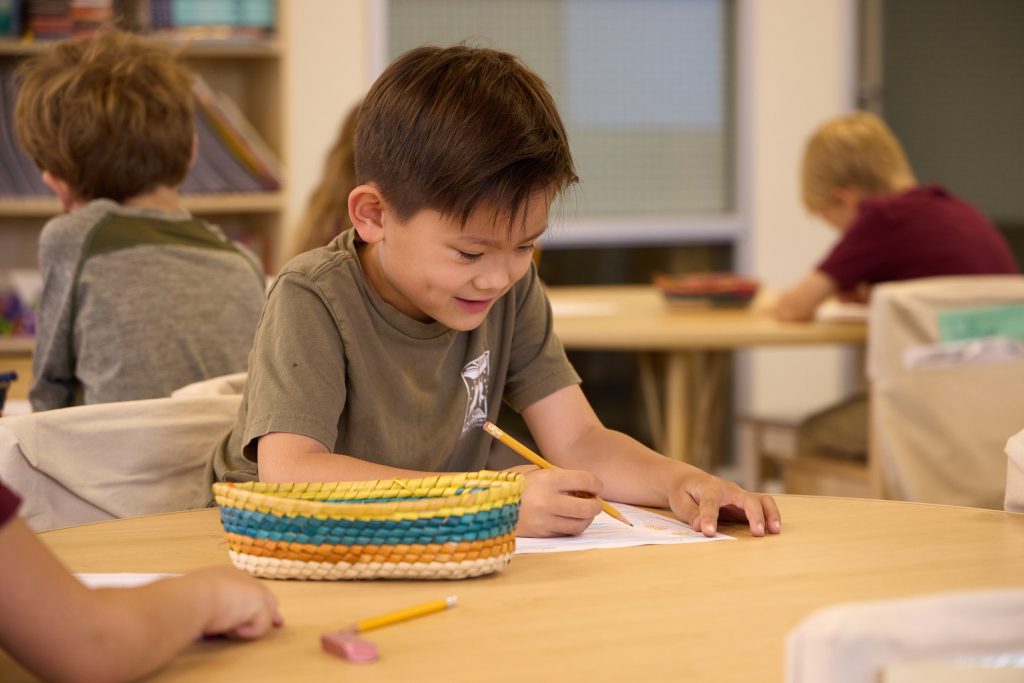
Our Approach – An Overview
At Seven Arrows, the curriculum originates with essential themes and questions to create a framework for learning. These large ideas, and the essential questions, which are generated from the themes, have no easy answers. They provide a deep and rich context for inquiry and learning across disciplines and allow students to examine issues through many different lenses.
Integrated Experiential Learning
Integrated Experiential Learning is the Seven Arrows Way of Education, and provides deliberately crafted learning experiences and instruction that allow students to make connections across skills, habits of heart and mind, knowledge, and community, both inside and outside of the school environment.
Traditional learning in the classroom tends to be compartmentalized into subject areas, disconnected and isolated, and focused on individual effort apart from the real-world. However, we know that life is not organized by chapters, with tests to signal what information to apply. Learning from the traditional model, students often cannot apply even recently learned information to new situations. And, unless students learn explicitly to recognize when their knowledge might be useful, can recall that knowledge, and know how to apply it, they will fail to transfer what they know; their understanding is incomplete.
Integrated Experiential Learning provides highly differentiated learning experiences in which students develop their knowledge, skills, and understanding not only across multiple subject areas, but in new contexts. Students use skills and knowledge from differing sources and experiences, develop perspective by understanding diverse points of view, make connections between past knowledge and new situations, and apply social emotional “life skills” to learning and doing.
With these practices, students continuously learn and adapt when windows of opportunity open. They become confident risk-takers in creative thinking, resilient in their pursuit of learning, and strive for excellence in their academic, artistic, and athletic pursuits. They understand their strengths and their needs as learners. They become respectful, responsible participants in their communities, both local and global, and possess a lifelong commitment to social justice.

Differentiation
At Seven Arrows, we recognize the unique strengths and needs of each student. Our highly differentiated approach ensures that students spend a significant portion of their day in like-leveled learning groups, receiving personalized instruction tailored to their specific abilities and learning styles. Accordingly, our students tend to outpace their peers at other schools academically, particularly in math.
Having a differentiated learning model in classrooms allows for more engagement, and enhances the overall learning environment. Not all learning styles are alike, and differentiating instruction supports a classroom environment where multiple learning styles and interests are designed into the lesson plan. This tailoring allows for more individualization and ultimately teaches to each student’s specific learning styles.
Author and educator, Carol Ann Tomlinson, is a leader in the workings of the differentiated classroom. Because differentiation is innately challenging for most teachers who have learned to teach to the entire class, or simply scaffold to larger groups, the process of mastering this more individualized method is endless.
In Tomlinson’s book, How to Differentiate Instruction in Academically Diverse Classrooms, she states, “Teachers who have become comfortable with differentiated classrooms would probably say their role differs in some significant ways from that of a teacher in a more ‘traditional’ classroom. When teachers differentiate instruction, they move away from seeing themselves as keepers and dispensers of knowledge, and move toward seeing themselves as collaborators with students and organizers of learning opportunities. While content knowledge remains important, these teachers focus less on knowing all of the answers and more on ‘reading’ and guiding their students. They work persistently to understand their students’ cultures, backgrounds, interests, strengths, and needs. Equipped with this insight, they can partner with students to create learning paths that both capture students’ attention and lead to enhanced comprehension. Organizing a class for effective activity and exploration becomes a high priority.
Teachers who differentiate instruction focus on their role as a coach or mentor, give students as much responsibility for learning as they can handle, and (1) assess student readiness through a variety of means, (2) elicit and interpret student cues about interests and learning preferences, (3) create a variety of ways students can interact with information and ideas, (4) develop varied ways students can explore and “own” ideas, and (5) present varied channels through which students can express and expand understandings. ‘Covering information’ takes a back seat to making meaning out of important ideas. Most of us have not been trained to look at teaching in this light but we are learners, too. We may not be able to transform our image of ourselves in a flash, but we can and should remake ourselves over the course of a career” (Tomlinson p. 34 and 35).

